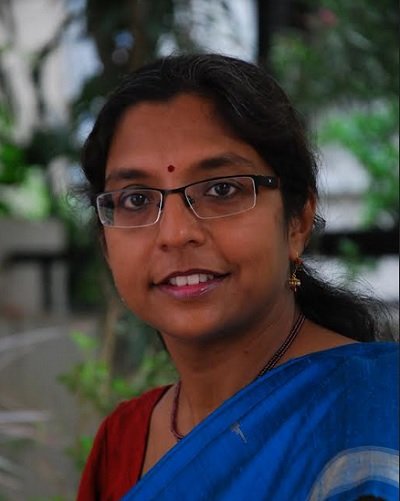PoC systems: A new role in epidemiology
May 30, 2022 | Monday | Views
Epidemiologists are starting to tap into novel sources of data that includes data generated outside the public health system and which can serve as surrogate indicators of health status. An insight by Dr Radha Rangarajan, Chief Technology Officer, HealthCube

The COVID-19 pandemic has given the world many learning lessons. Chief among them is the key role that data plays in public health policy decisions. While this was not a new lesson, what the pandemic taught us was that traditional modes of data collection are often insufficient and slow, hampering decision making. The needs of the world now are rapid data collection, aggregation and analysis, leading to interventions. How can we improve the process?
Traditionally, epidemiological data have been collected from healthcare facilities. In most countries, hospitals and clinics are required to report certain types of diseases when they are detected. For example, TB infections in India have to be reported to the nodal public health authority of the state, which then tracks the incidence and distribution of the disease. However, the same is not true for other infections. For drug-resistant bacterial infections, the Indian Council of Medical Research has designated hospitals that are responsible for the surveillance of specific bacterial species. These data become available to the medical community periodically or are reported in scientific journals, but with a significant time lag. Furthermore, a large network of hospitals and healthcare facilities needs to contribute data. A lack of sufficient infrastructure, personnel and uniformity of diagnostic test procedures can compromise the quality of insights that can be derived.
To overcome such hurdles, epidemiologists are starting to tap into novel sources of data. This includes data generated outside of the public health system that can serve as surrogate indicators of health status. Researchers are using spatiotemporal trends extrapolated from electronic payments, cellular services, search queries or social media, to predict the distribution, incidence, and aetiology of a disease. For example, if certain keywords are searched for many times during a short period, it may point to a rise in a condition. Google flu trends used this methodology to make predictions of flu outbreaks between 2008 and 2015. Their predictions were sometimes 10 days ahead of announcements by the Centers for Disease Control (CDC), a testament to the power of algorithms. In more recent times, China has pursued a zero covid policy largely by collecting information through apps that track symptoms and movements of people and restricting their entry into public spaces based on algorithms that calculate risk. However, such sources can be biased, false, lacking in specificity and infringe on privacy.
Are there alternatives? One can go back into the public health space and re-examine how and where the disease gets detected. Most often it is in a doctor’s clinic, based on a diagnostic test performed. One of the biggest hurdles in reporting is that test reports are in a paper format and clinics are not equipped for digitisation. Second, patients fear an invasion of privacy. These issues can be addressed by changing the paradigm of testing and reporting. Devices that are digitally enabled can deposit data into central repositories. By stripping patient identifiers, the data remains anonymous and privacy is protected. Such data can be mined with great public health benefits. For example, PATH, a Seattle based non-profit has collaborated with the Government of Zambia since 2015 to use data tools to bring down the incidence of malaria to zero in that country.
Jeff Bernson, the Chief Data Officer at PATH says, "To identify and treat every last case of malaria, we must be able to target communities where the parasite is hiding—and see accurate, reliable data that tracks emerging transmission patterns is the flashlight."
At the heart of the project is a series of operational dashboards that help district health personnel track where an outbreak is emerging and intervene. This project aptly called 'Visualize no malaria' starts with community health workers reporting data from the field into a central system and uses eight technology and services companies to ensure the data is cleansed and modelled and insights are gained in real-time. While such a system is similar to traditional techniques of acquiring data, the method and efficiency of usage are greatly augmented by technology and algorithms. In Zambia’s Southern Province, the implementation of this project has resulted in a 92 per cent reduction in malaria-related deaths.
While the PATH project has been resource-intensive and driven by the thousands of healthcare workers on the ground, effective replication of this model will require a simplification of the data acquisition process. This is entirely possible by moving to digitally-enabled diagnostic systems. Take, for example, point-of-care devices such as the HealthCube which are operated using an app on the phone. The device has a rapid test reader that can read and interpret lateral flow diagnostic tests for many infectious diseases.
The test results are automatically available in a digital format, minimising the effort required to share or deposit results. Further, the system comes integrated with a web-based portal that allows a central administrator to log into a dashboard and view test results across devices that are deployed. This means that health administrators can analyse the data, look for trends and take the appropriate action in real-time. In other words, a robust disease surveillance system can be set up at low cost and scale with high efficiency and reliability.
Health systems globally need to become more responsive and agile to ensure the safety of populations. A combination of automation in data acquisition, customised analytics and decentralised diagnostic systems will help strengthen epidemiological capabilities and enable the appropriate interventions. Point-of-care devices that are digitally enabled can play a key role in meeting this need.










